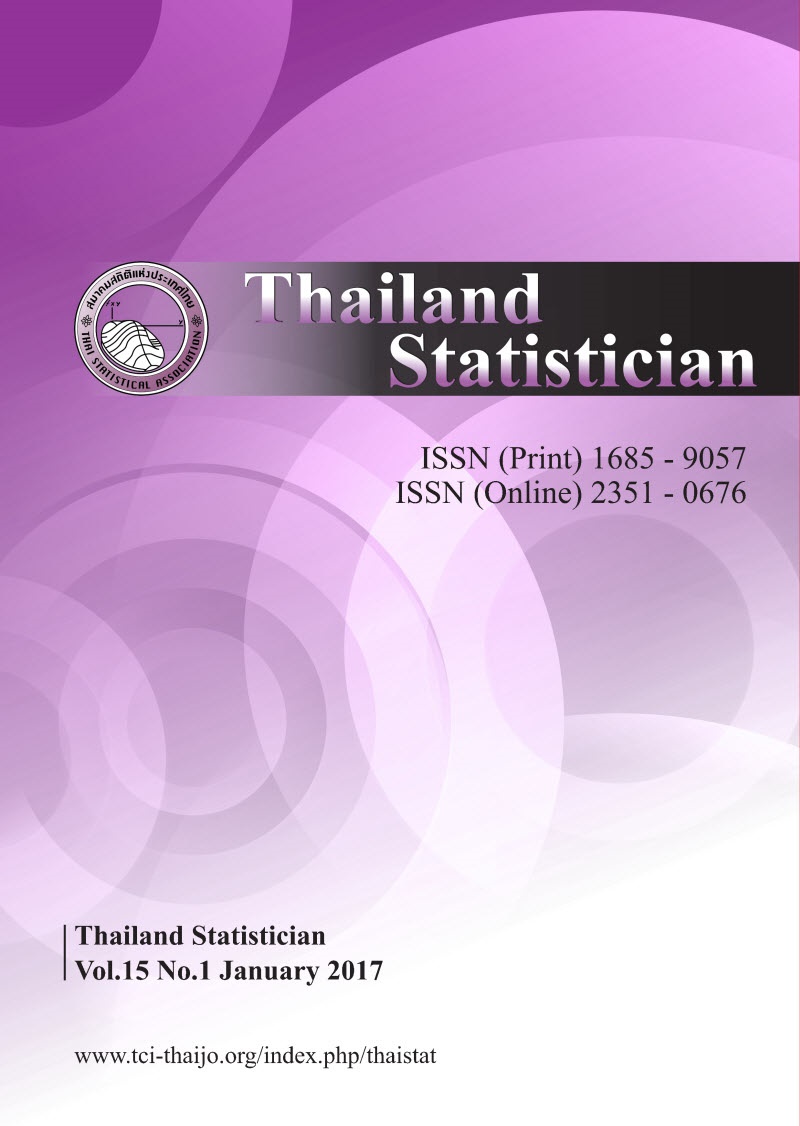One More Geometric Interpretation of Pearson’s Correlation
Abstract
It is known that Pearson’s correlation coefficient r is equal to the cosine of the angle between the vectors ⃗x and ⃗y describing the centered data. We use this known fact to show that r describes how closer the corresponding unit vector ⃗ex = is to the y-unit vector ⃗ey =
than to its opposite −⃗ey: namely, r is equal to the (scaled) difference between the squared distances d2(⃗ex, −⃗ey) and d2(⃗ex, ⃗ey). In particular, the correlation is positive if ⃗ex is closer to ⃗ey and negative if ⃗ex is closer to −⃗ey.
Downloads
How to Cite
Batyrshin, I., & Kreinovich, V. (2015). One More Geometric Interpretation of Pearson’s Correlation. Thailand Statistician, 13(1), 125–126. retrieved from https://ph02.tci-thaijo.org/index.php/thaistat/article/view/34190
Issue
Section
Articles




